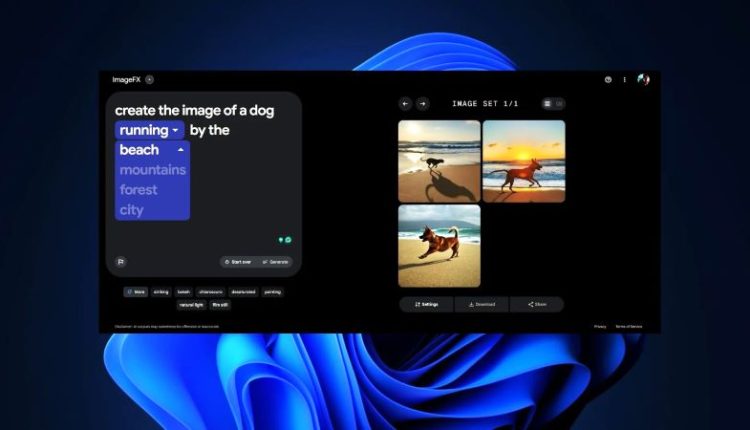Google unveils new standalone AI image generator
Google has unveiled ‘ImageFX’, a cutting-edge AI image generator accessible through Labs. The innovative tool is built upon the Imagen 2 model, which already powers AI image creation within Bard.
ImageFX joins Google’s expanding suite of specialized tools for generative artificial intelligence, alongside MusicFX and TextFX. The lineup empowers users to unleash creativity in various domains: captivating visuals, melodic compositions, and stylized text.
ImageFX introduces a new dimension of possibilities, harnessing the power of generative AI to craft mesmerizing and visually stunning images.
Developed by Google’s advanced AI lab, DeepMind, Imagen 2 is a powerhouse capable of generating diverse images and styles based on a straightforward text prompt. According to the company, it sets a new standard for image quality, surpassing the achievements of its predecessors.
In addition to being integrated into the new standalone tools ImageFX, and Bard, Imagen 2 is set to make its presence felt in Duet AI—an integral generative artificial intelligence service embedded within Workspace apps such as Docs and Slides.
Introducing #ImageFX ✨ a new image generation tool powered by Imagen 2, Google’s most advanced text-to-image model. We’re excited to add this to our suite of generative AI tools at Labs, and to help bring your most creative ideas to life. Try it out: https://t.co/e07Zz3Pdx4 pic.twitter.com/MVXEEt9c2b
— labs.google (@labsdotgoogle) February 1, 2024
Prompt creation
Google has enhanced the ImageFX prompt refinement by adopting techniques from MusicFX’s user interface. Leveraging “expressive chips,” users can swiftly experiment with changes, offering a seamless and intuitive experience.
Inputting a desired prompt, such as “a photorealistic depiction of a dog riding a surfboard,” prompts the system to highlight keywords like photorealistic, dog, and surfboard. Users can effortlessly explore alternatives for each keyword through a convenient dropdown menu selection.
Also Read: Google introduces AI updates to search engine
Google asserts that this innovative approach, coupled with the underlying Imagen model, achieves “our highest-quality images yet.” It not only addresses common challenges faced by text-to-image systems but also ensures images remain free from distracting visual artifacts.
Combating misinformation
To combat the potential misuse of ImageFX or any tool utilizing Imagen 2 as its foundation for creating misinformation or deepfake images, Google has implemented SynthID in the generated pictures. This enhancement aims to reinforce authenticity and counter the spread of deceptive content.
SynthID, a technique crafted by DeepMind, introduces a covert watermark within generated content, extending its functionality across music, video, and images. In images, this watermark is intricately embedded within the pixels, making it resistant to easy removal or extraction. Its purpose is to unveil the artificial origins of even the most realistic images, reinforcing transparency and accountability.
In addition to SynthID, Google has implemented protective measures in its training data to curtail the generation of violent, offensive, or sexually explicit content. Additional filters are in place to prevent the model from producing images featuring known or named individuals, reinforcing responsible and ethical usage of the technology.
“We also conduct extensive adversarial testing to identify and mitigate potential harmful and problematic content,” a spokesperson explained. “In addition, all images generated using ImageFX include IPTC metadata, giving people more information whenever they encounter our AI-generated images.”
ImageFX is exclusively accessible through Google’s AI Test Kitchen, alongside MusicFX, TextFX, and Generative AI Search. Presently, it is limited to users in the U.S., Kenya, New Zealand, and Australia and is only available in English.

